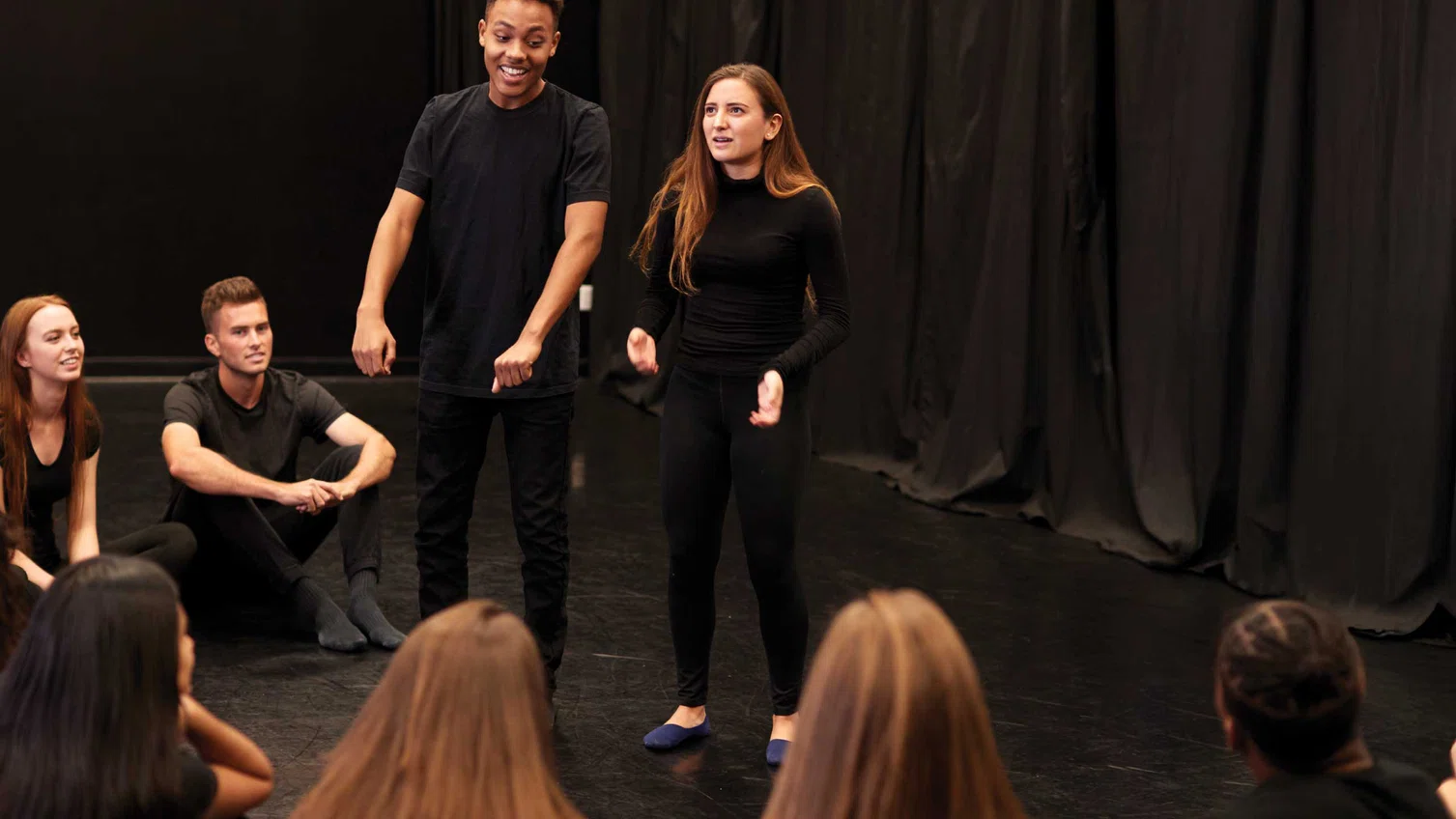



About

IN EVERY ISSUE
1.
PRESIDENT'S MESSAGE
Let’s Work Together and Make Some Magic!

2.
Publisher’s Message
Collaboration You Can Feel

3.
FROM THE EDITOR
Collaboration Opens the Door for Shared Leadership

Calendar of Events
4.

FEATURES
5.
Preparing for a Smooth Handoff: The tender, scary, and rewarding process of working towards a successful leadership transition

6.
The unexpected effect of AI on creativity: Protecting the human need to create nurtures motivation.

7.
5 Takeaways to Embrace – Collaboration as the New Currency

8.
How Collaborative Improv Comedy Techniques Can Enhance Client Engagement and Business Development

COLUMN
12.
2025 MCA AWARDS
The 2025 MCA Judges

13.
2025 MCA AWARDS
The 2025 SMPS Marketing Communication Awards Winners

14.
2025 MCA AWARDS
HITT Contracting Wins MCA Best of Show for High-Voltage Year-End Meeting

15.
2025 MCA AWARDS
Carollo’s I-FLOAT Campaign Wins MCA People’s Choice at Amplify A|E|C

16.
2025 MCA AWARDS
Interview with Brad Thurman: 2025 Weld Coxe Marketing Achievement Award Recipient

17.
2025 MCA AWARDS
SMPS Names 2025 Chapter President of the Year: Olivia Farquharson, CDMP, PCM

18.
2025 MCA AWARDS
SMPS Recognizes Of the Year Awards at Amplify A|E|C

19.
2025 MCA AWARDS
Congratulations to the 2025 Class of Fellows

20.
2025 MCA AWARDS
Congratulations to the New CPSMs

Improvisational comedy (improv) is a type of live theater where performers work together to create dialogue, characters, and scenes spontaneously without a script, with the goal of being funny. Improvisers use listening and teamwork skills to successfully build a scene from scratch and connect with their audience. While improv is often associated with entertainment, its foundational concepts offer practical strategies for enhancing A/E/C client engagement and business development.
“Yes, and…”
The most basic principle of improv is “Yes, and…”. For two or more actors to build a scene from nothing, first, they need to agree on the reality of the scene. This includes who they are, what they're doing, and where they are. Improvisers can do this quickly when they agree with what their scene partner has established and then add the next detail. The “and” is just as important as being in agreement. Each improviser needs to add something to build the momentum of the scene.
A/E/C Connection
Look for opportunities to build on your current relationships and add support to clients and teaming partners. Make an effort to lift up the things that they are doing. If they are hosting an event for an industry organization, sign up and show up. Share their posts on LinkedIn with a thoughtful comment.
If you see something that reminds you of a colleague such as a podcast or an upcoming webinar, send it to them.

Relationship
Within the who, what, and where of the scene, one of the first things improv actors will aim to do is establish the specific relationship between the characters. Every good scene is really about the relationships between characters. When a relationship is clear, it allows the improvisers to bring back those characters at any location to see what happens in that situation. Think, goofy neighbors who run into each other at the grocery store, a doctor’s office, and finally the airport.

A/E/C Connection
Remember the big picture and develop your relationships for the long-term. Projects come and go. Make an effort to connect with your teaming partners beyond the latest RFP. When you are focused on building genuine relationships, you set your project team up for success, no matter what they are working on or what type of challenge they face.
Active Listening
Establishing a scene from nothing requires active listening. Improvisers strive to pay attention to everything. They notice what their scene partner is saying, how they are saying it, what they’re not saying, and the actions that are being taken.

A/E/C Connection
Pay attention to your clients and to your intuition. This will help you identify client hot buttons and truly see your client’s challenges. Beyond reading the RFP, notice the issues they bring up during a pre-proposal meeting and in their city council meetings. In an interview Q&A, notice what your client gets excited about and look for moments of shared excitement. Active listening will help you identify how your firm can uniquely provide the solution they need.

Embrace Mistakes
When you are actively listening, you can find the opportunity in any mistake. Some of the funniest improvised moments I have seen came from one improviser making a ‘mistake’ and their scene partner noticing and embracing it as a gift. The reality is the audience probably also noticed it. If you ignore that ‘mistake’, you break the trust you have built with your audience and they can quickly turn into a tough crowd. If you acknowledge it and weave it into the scene, you can move forward faster.

A/E/C Connection
Mistakes in the A/E/C world can be very costly, but they cost more if you try to ignore them. This is good to keep in mind when you receive tough feedback or if your pursuit ends up as a loss. Make an effort to find the opportunity in the situation. If your team lost, ask for a debrief from the client and incorporate that feedback into your next proposal. If a client satisfaction survey shows negative feedback, discuss how to address it and make those changes. This builds the trust of your client relationships and will help your team overcome that feedback.
Find the Fun
The idea of finding the fun doesn’t mean forcing jokes or trying to be the funniest person on stage. When something sparks laughter, excitement, or surprise, that’s where the scene should go. The best scenes emerge when performers notice the fun of the scene and follow that spark together.

A/E/C Connection
A business development schedule is filled with typical events such as exhibiting at a conference, hosting a happy hour, or sponsoring an event for a local chapter of an industry organization. Find opportunities to create moments that are interactive and encourage collaboration between attendees. This will add joy, curiosity, and fun to these standard events. If your firm were a character, what type of activities would it do? What will you remember more: a happy hour where you picked up a name tag and a drink ticket, or a happy hour where, upon arrival, you were given the rules to a scavenger hunt and got to play with the other attendees?
Improvisational comedy may seem far removed from the world of A/E/C marketing, but its principles offer a surprisingly practical toolkit. By applying these concepts, marketers and technical teams can approach proposals, interviews, and client relationships with greater creativity, confidence, and authenticity. Improv is not only about being humorous. It is about being present, adaptable, and engaged. Those same qualities enable A/E/C firms to strengthen client connections and increase their competitiveness. In the end, winning work does not always require a script. If improv can keep an audience laughing, it can certainly help keep a client listening.
CHRISTINE WILLIS is a proposal manager at CWE, a civil engineering firm in California. Her background includes over a decade of improv experience in both Chicago, IL, and Los Angeles, CA. She has over 15 years of experience in A/E/C marketing, including producing proposals and leading marketing staff. Utilizing her background in improv comedy, she brings a unique perspective to building project teams, coaching technical staff for interviews, and developing client relationships.

Connect on Linkedin










